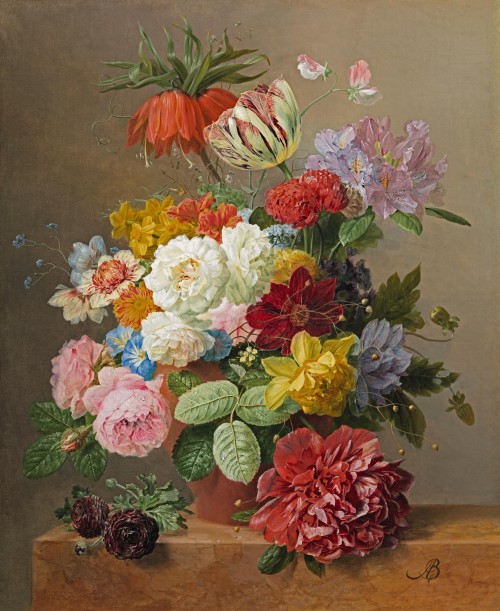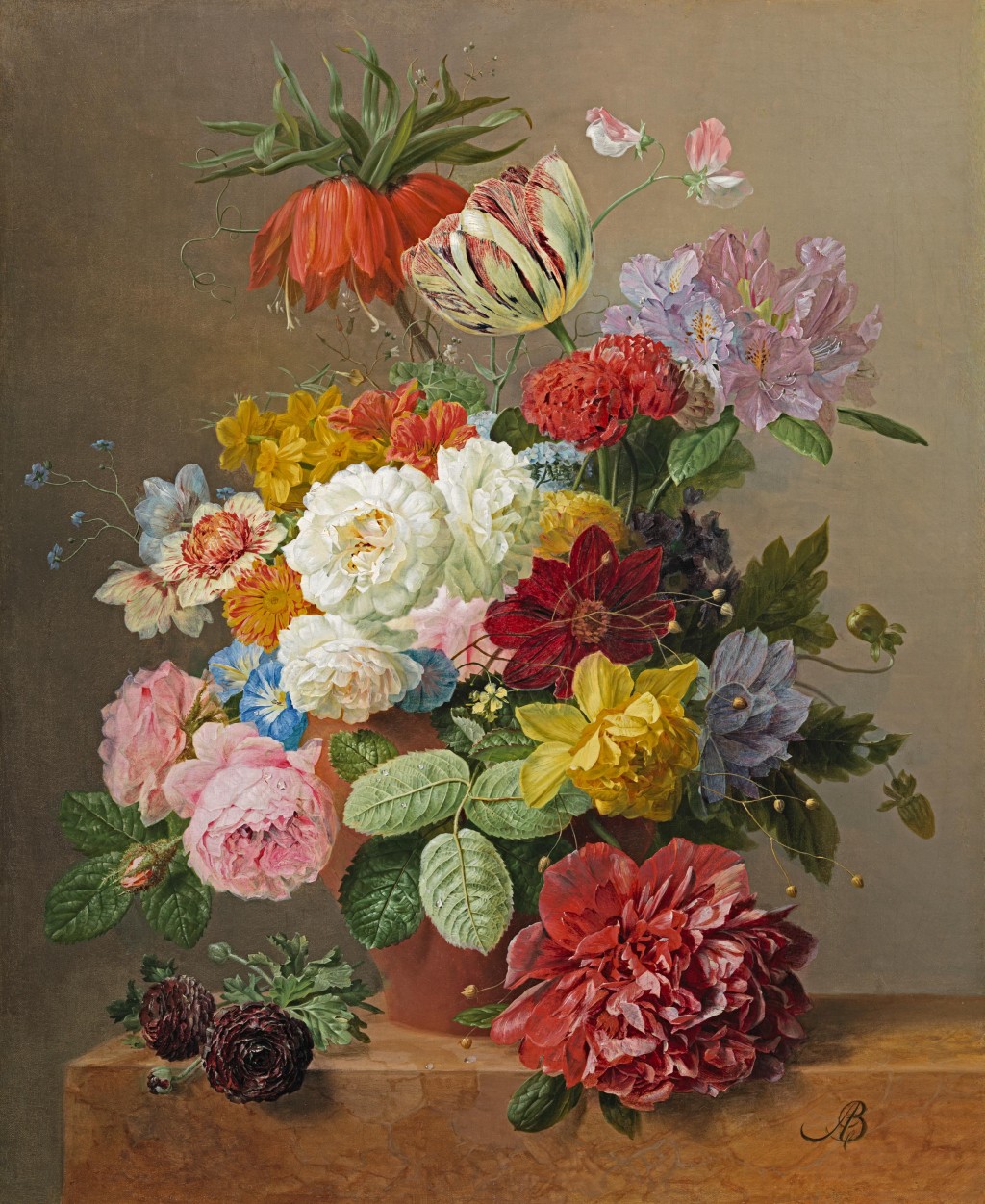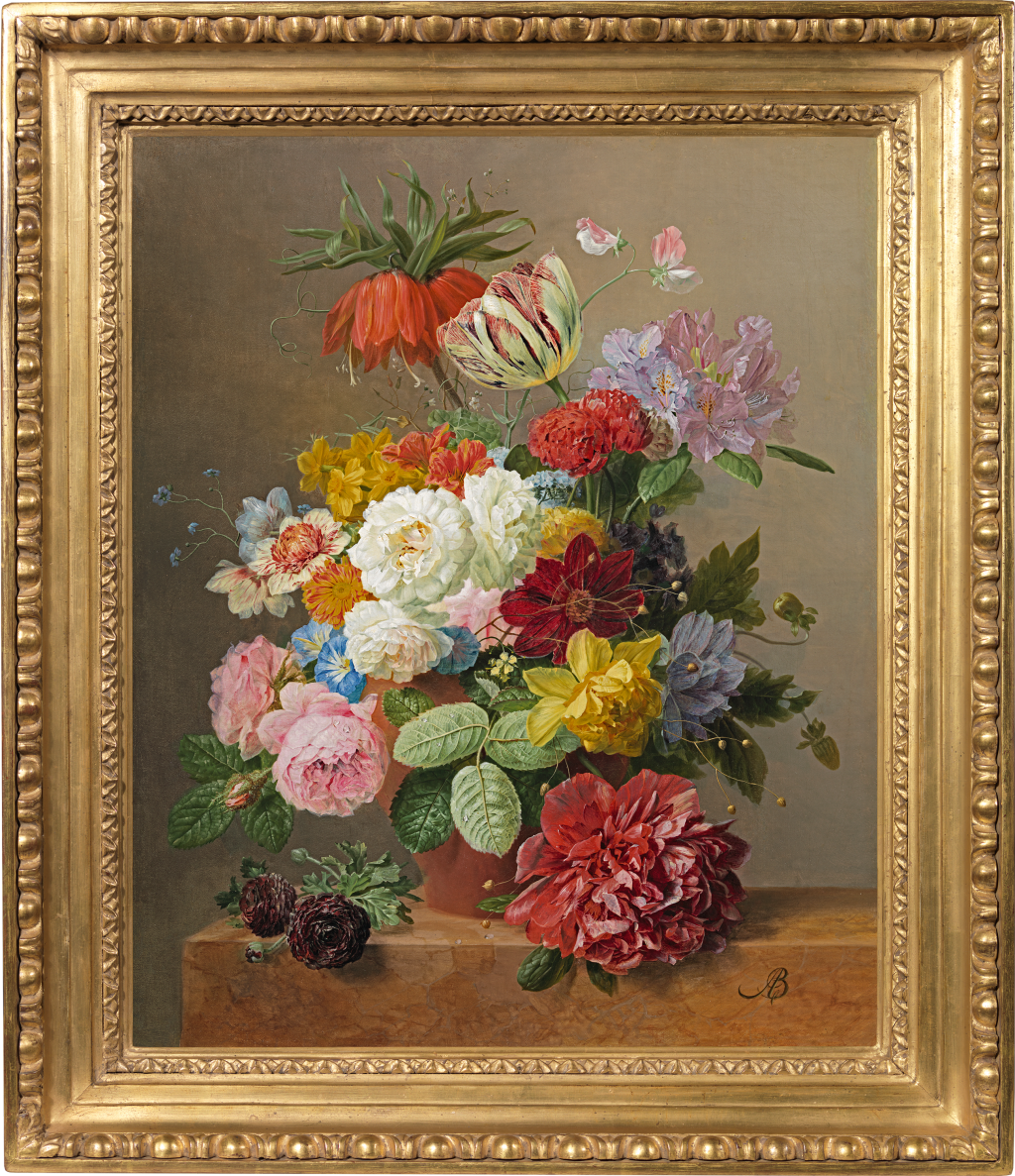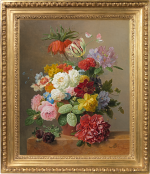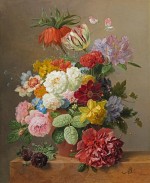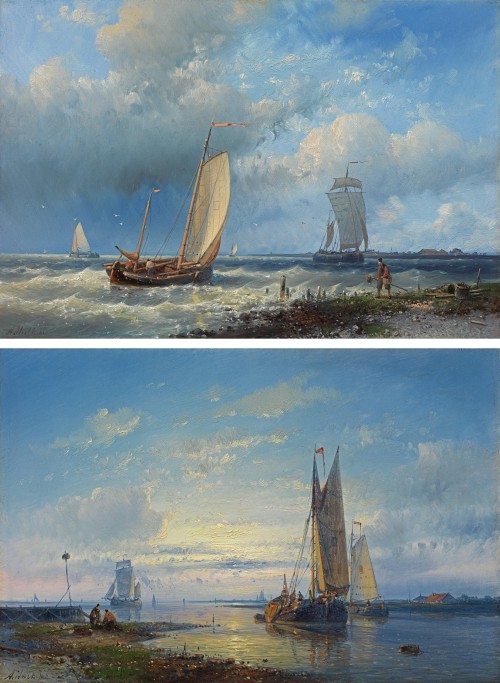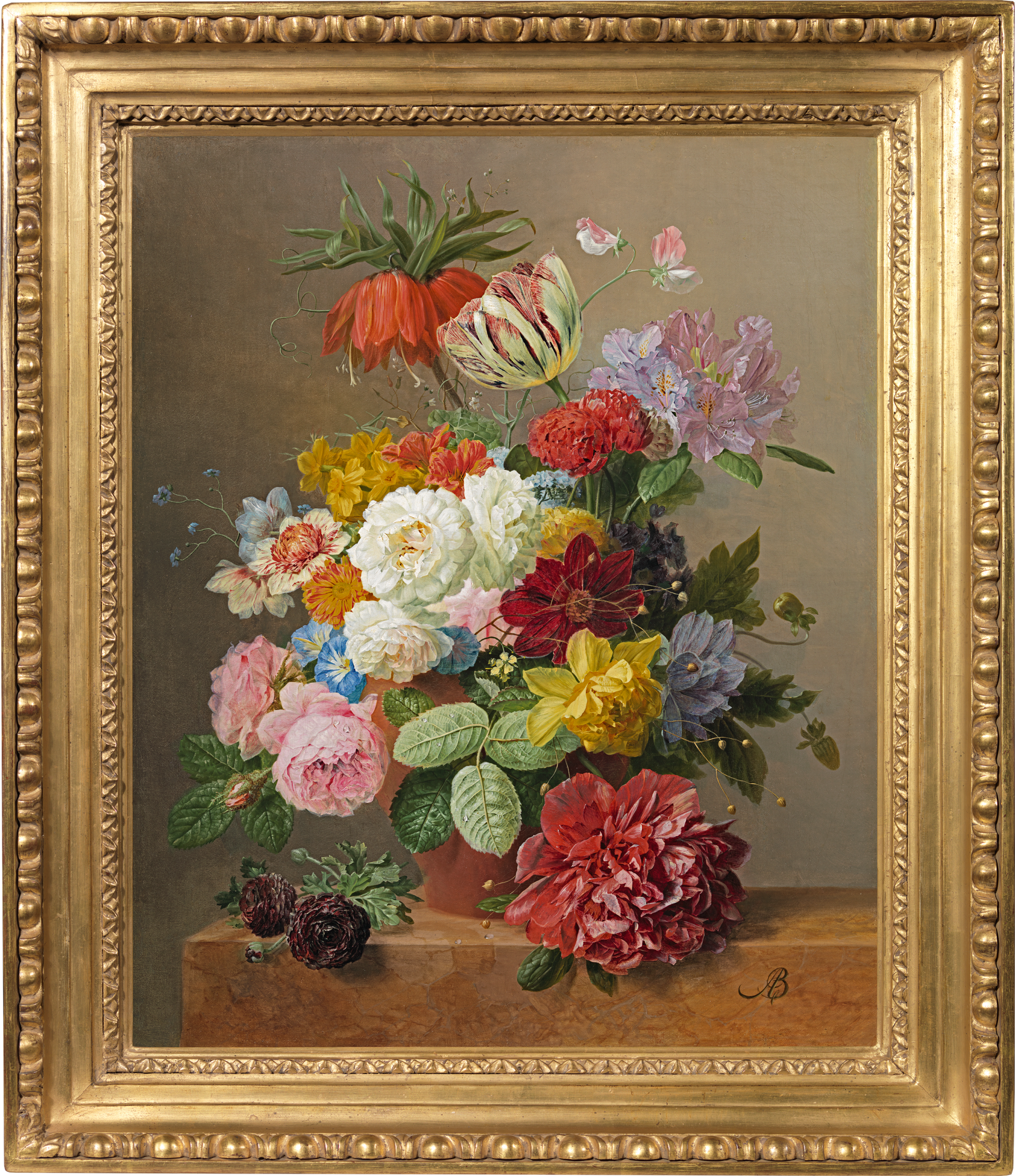ARNOLDUS BLOEMERS
1792 - Amsterdam - 1844
Ref: BY 155
Still life with roses, peonies, tulips and other flowers in a vase on a marble ledge
Signed with monogram lower right: AB
Oil on canvas: 22 x 18 in / 55.9 x 45.7 cm
Frame size: 27 x 23 in / 68.6 x 58.4 cm
Painted in the 1830s
Provenance:
Private collection, UK
Arnoldus Bloemers spent all his career in Amsterdam, specializing in flower- and fruitpieces, sometimes with the addition of dead game. He worked in the tradition of Jan van Os (1744-1808), producing tightly-constructed bouquets, often in a simple terracotta vase set on a stone ledge.
Jan van Huysum (1682-1749) introduced light backgrounds into his flowerpieces in the second quarter of the eighteenth century, a format which remained popular into the nineteenth. Bloemers continues this fashion, as well as the taste for a rainbow array of hues and a large number of flower species from origins across the globe, each exquisitely delineated and bathed in light. This bouquet is constructed on diagonal bands of blooms, alternating pastel and deeper shades, from the fritillaria imperialis at the crown, to the claret-coloured dahlia, to the lavish red peony and deep burgundy ranunculi on the ledge. As with seventeenth century flowerpieces, Bloemers brings together species which flower at different times of year, from the narcissi (early spring) to the dahlia (late summer).
More than twenty species can be counted in this bouquet, in a wonderful variety of shapes and textures. The painting reflects the sophistication of botany and horticulture in the nineteenth century Netherlands, continuing a proud tradition that had helped to define the nation for three centuries. The fritillaria imperialis, anemones, tulip, peony and white roses are favourites from Golden Age still lifes. During the eighteenth century flowers from America, such as morning glory and nasturtiums, came into European cultivation. Bloemers uses the pure, clear blue of the morning glory as a cool contrast to the pink and white roses at the left of the painting. The nasturtiums, originally known as Indian cress (both flowers and leaves are edible) peep out near the top of the composition, their complexity requiring a tour-de-force of brushwork.
The dahlia, a genus that came to feature prominently in nineteenth century garden fashion, was first mentioned in 1525, shortly after the Spanish conquest of Mexico, but was only just arriving in European gardens as Bloemers was painting. Their variety of jewel-bright colours appealed to the era, as did the fact that they bloom in northern Europe from late summer, creating cheer in the garden until felled by the autumn frosts.
At this time rhododendrons were also starting to excite collectors, originally because of the boxes of living American plants sent by John Bartram from Pennsylvania to his plant-collecting friends in London, especially Peter Collinson. However, these early American rhododendrons proved hard to cultivate and the plant shown to the right of the painting is R. ponticum from the Near East, which adapted far more readily to the shrubberies which were then coming into vogue in Europe.
One of the most delightful passages of this work is provided by the sweet peas next to the tulip, silhouetted against the background. Loved for their delicate fragrance, such flowers were discovered growing wild in Sicily and brought into general cultivation in the eighteenth century.
We are grateful to Dr Celia Fisher for her identification of the flower species.
ARNOLDUS BLOEMERS
Amsterdam 1785 – 1844 Niewer-Amstel (Amstelveen)
Arnoldus Bloemers was a Dutch still life painter of fruit and flowerpieces, sometimes incorporating dead game. He continued the tradition of eighteenth century flower painting practiced by Jan van Os (1744-1808), in works that employ a bright range of colours and flower species, beautifully observed, set against light backgrounds.
Born in Amsterdam, Bloemers studied at the Koninklijke Academie voor Beeldende Kunsten with Antoine Piera (1756-1838), where he later became a member. He also belonged to the Genootschap Arti Sacrum in Rotterdam and the Kunstbevorderend Genootschap VW in Amsterdam. Bloemers exhibited in The Hague and Rotterdam between 1818 and 1843. In 1844 he exhibited at the Paris Salon. Gabriël Henriques de Castro (1808-1853) was his pupil.
The work of Arnoldus Bloemers is represented in the Broughton Collection at the Fitzwilliam Museum, Cambridge; the Teylers Museum, Haarlem; the Stedelijk Museum, Amsterdam and the Institute Collectie Nederland, Amsterdam.

